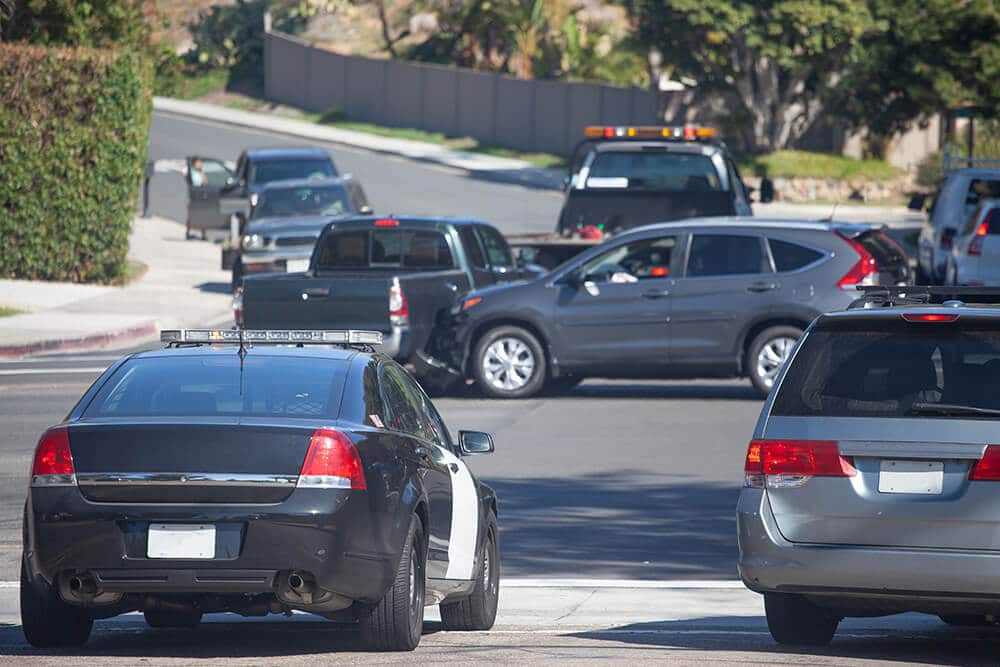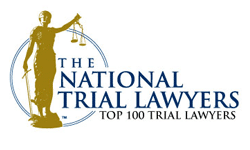Who Is Usually at Fault in a T-Bone Car Accident?

In this article, we will look at the T-bone accident—what it is, how it’s caused, what injuries can result, and what to do if you’re involved in one. After reading, we invite to reach out to an attorney with experience in car accident law at Belsky & Horowitz, LLC with further questions.
What Is a T-Bone Car Accident?
A T-bone accident is named for the shape of a “T” that is formed when the front of one car collides with the side of another car. When one vehicle strikes another this way, it is also referred to as a broadside collision, a side-impact collision, or more informally as “getting T-boned.” According to the most recent information published by the Insurance Institute for Highway Safety (IIHS), side-impact collisions account for nearly one-fourth of all passenger vehicle car accident deaths.
What causes T-bone accidents can vary, but these collisions often involve two cars at an intersection. The following scenarios are the ones most likely to result in a T-bone accident:
- A driver runs a red light
- A driver fails to yield when the other driver has the right of way
- A driver makes a left-hand turn into an oncoming car
- A driver thinks another car will stop at a yellow light
- A driver doesn’t properly stop at a stop sign
- A driver is distracted and doesn’t see another car while turning
- A driver rushes to cross an intersection when there is an oncoming car
- A driver is reckless or impaired and makes careless decisions
Who Is at Fault in a T-Bone Accident?
Determining who is at fault in a T-bone accident will depend on several factors. For T-bone accidents, it’s often fairly easy to know which party is at fault since these collisions are most often caused by a traffic violation. Knowing who is at fault if you get T-boned, or who is at fault in a car accident at an intersection when one car hits another, is important so that the at-fault party is held liable.
In most T-bone scenarios, there is one driver primarily at fault for the collision. While one driver is following the rules of the road, the second driver violates a traffic law and strikes the other vehicle. In such cases, the traffic violation is most likely to be:
- Running a red light
- Not stopping at a stop sign
- Using a mobile device or texting and driving
- Not yielding when the other car has the right of way
- Speeding
- Making an illegal left turn
- Reckless driving
- Driving under the influence of drugs or alcohol
It’s possible that the drivers of both vehicles were partially at fault for the incident. The state of Maryland is unlike most other states in this matter. While many states allow a partially at-fault driver to receive at least some compensation after an accident, our state’s “contributory negligence” rule means that you can’t receive any compensation at all if you are found to be even 1% at fault in the accident. It’s therefore especially important in Maryland to accurately determine who is at fault in a T-bone accident.
And there are other traffic situations that can lead to a broadside collision between two cars. In addition to driver error, other factors can result in a T-bone accident including:
- Adverse weather
- Poor road conditions
- A mechanical failure in one or more vehicle
- Faulty traffic signals
- Poorly-designed intersections
If any of these elements were at play, the at-fault party may not be a driver. Gathering the evidence needed to determine liability becomes very important in these situations. An experienced car accident lawyer is needed to make sure that the correct party is held accountable, and that the injured party receives the compensation needed to recover losses.
How to Prove Liability in a T-Bone Accident
As car accident attorneys in Maryland, we at Belsky & Horowitz, LLC know that a motor vehicle accident is a life-changing event. The financial burden placed on an injured driver can seem impossible to bear. Personal injury law protects individuals who were injured through the actions of another party from being made to bear the financial, as well as physical and emotional, burden themselves. If you were injured by an at-fault driver in a T-bone accident, you may be entitled to compensation.
But in order for an injured driver to receive compensation for their losses, it must be determined who was at fault in the accident. While it may seem straightforward, it’s not always easy to determine liability in a motor vehicle accident. There are often conflicting stories, and simply saying, “That car hit me,” is not enough to prove liability. Our car accident team often uses these sources of evidence when determining liability after a car accident:
- Police reports made at the accident scene
- Photographs taken at the accident scene
- Traffic camera, dashboard camera, or other camera footage
- Eyewitness statements
- Physical damage done to vehicles
- Auto mechanic reports about the condition of the vehicle
- Expert witness testimonies
- Medical bills and physicians’ reports related to injuries sustained in the collision
What Type of Injury Is Commonly Associated with T-Bone Accidents?
It’s hard to know what to expect after a car accident, especially when the severity of injuries can vary so greatly. T-bone accidents are especially dangerous because both driver and passenger can be severely injured when a car is struck on its side. If a driver is speeding at the time of impact, the damage can be even more substantial, and often fatal. Additionally, if either of the drivers or passengers involved were not wearing seatbelts, there is an even greater risk of serious injury or death. And because T-bone accidents often occur at intersections with crosswalks, pedestrian or bicyclist injuries are always a danger as well.
The following types of injuries are the ones most commonly associated with T-bone accidents:
- Head, back, and neck injuries, including whiplash
- Brain injuries, including traumatic brain injuries (TBIs)
- Sprains and other soft tissue injuries
- Broken bones and fractures
- Bruises
- Internal injuries
- Knee injuries
- Facial disfigurement
- Crush injuries
- Injuries associated with airbag deployment
- Injuries that result when a vehicle strikes a pedestrian or bicyclist
The importance of seeing a physician after an auto collision can’t be understated. Many people do not realize the severity of their injuries until well after the fact. The shock of a collision and the rush of adrenaline in the body can mask the symptoms of a serious injury. Allow yourself to be checked by an emergency medical technician at the scene of the accident, schedule an appointment with your doctor for a compete checkup immediately after the crash, and be alert for any changing or worsening symptoms in the following weeks.
If you were injured in a T-bone accident that was caused by another driver, our car accident lawyers are ready to answer your questions. We invite you to reach out to our team of auto collision claim experts at Belsky & Horowitz, LLC. We offer free consultations to discuss your case details. We are available for consultations in Baltimore, Maryland and the surrounding areas.






